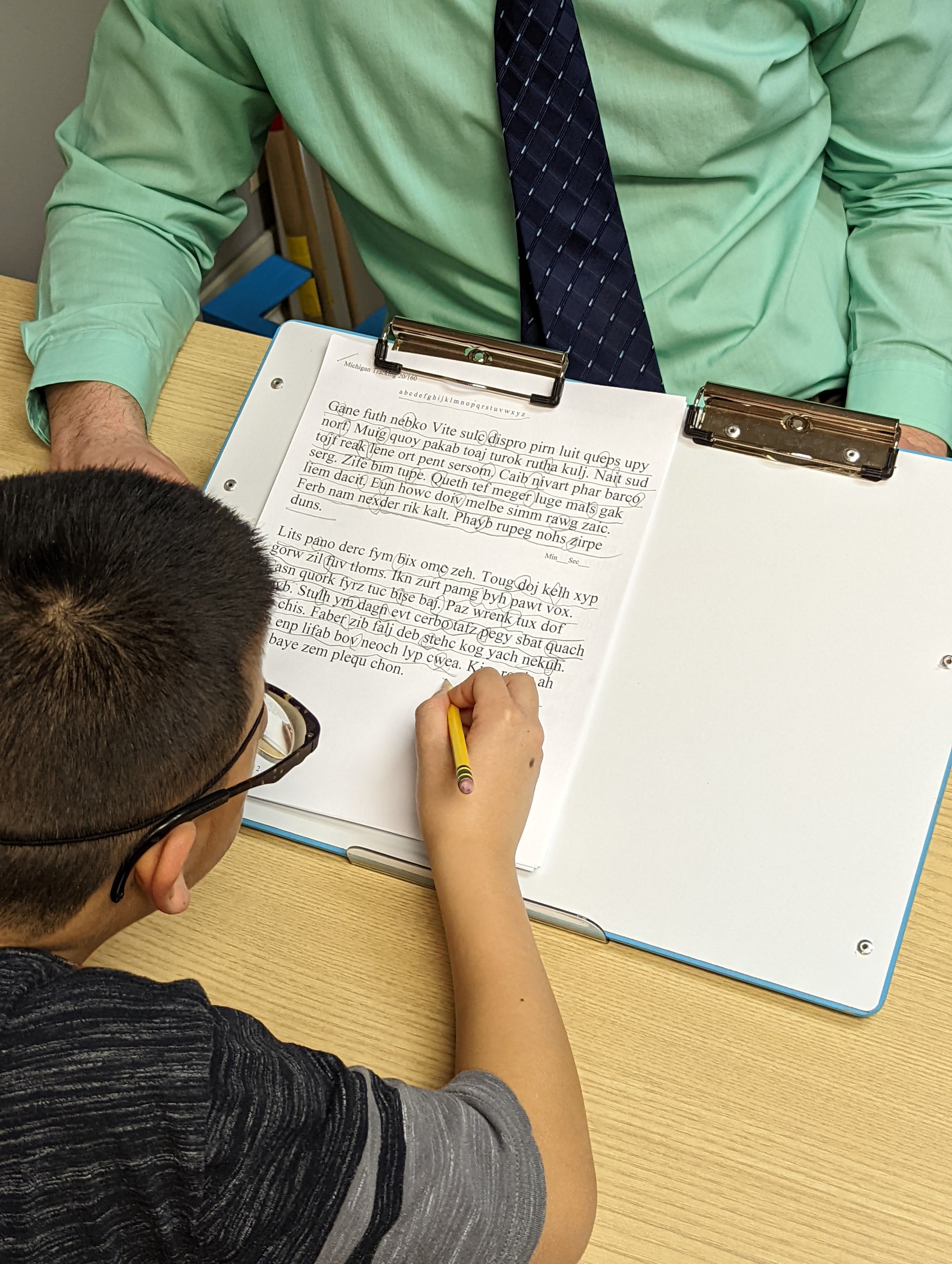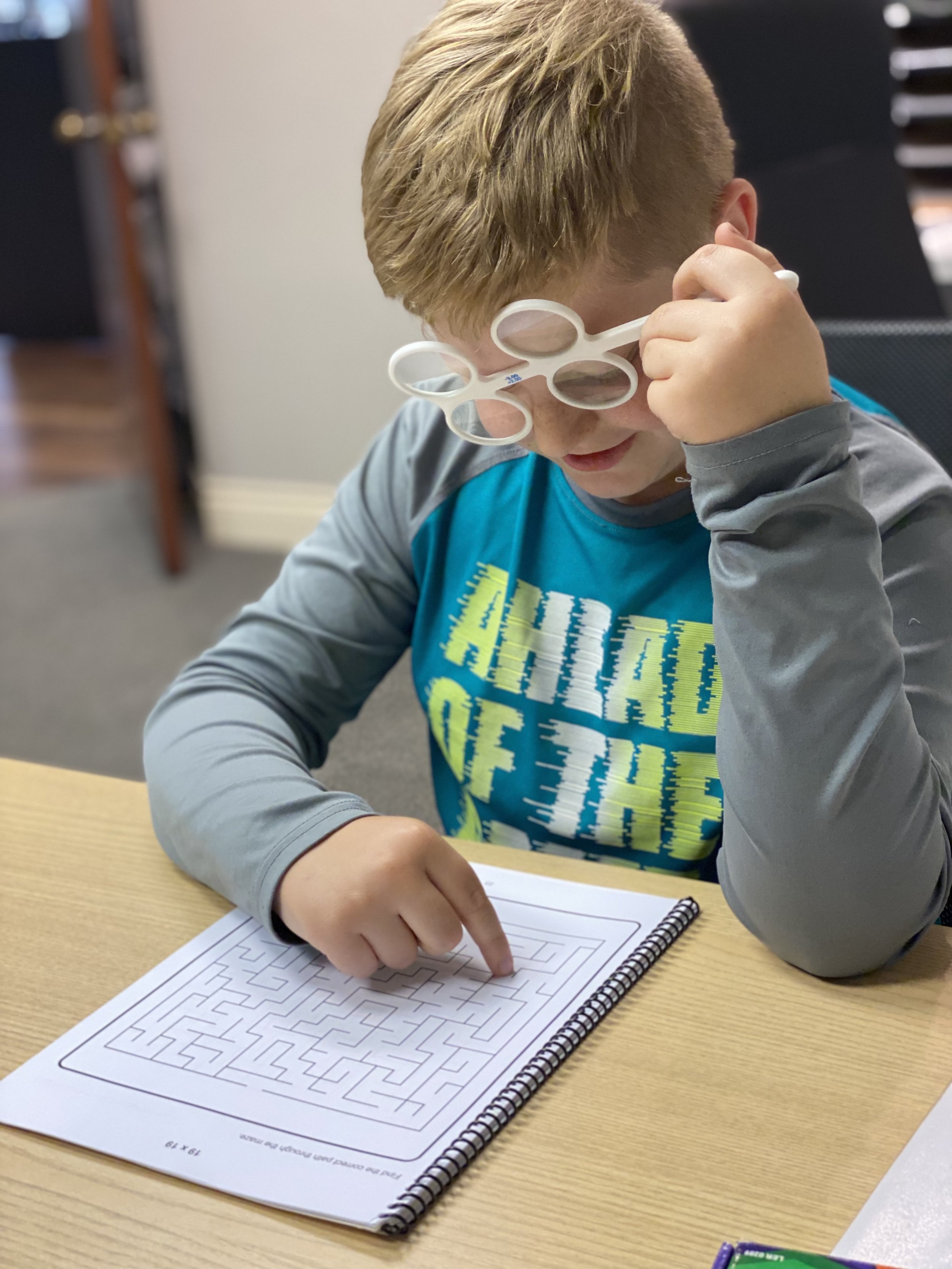
Learning-Related Vision Problems
Many of the children we work with suffer from vision problems that interfere with their ability to read, learn, comprehend and pay attention. Thriving in school requires tremendous demands on vision since 80% of everything we learn comes from vision. Our eyes are perfect for looking far away with brief periods of time focused up close. Nowadays, we use our eyes for hours everyday looking at books, schoolwork and screens. There is a fundamental mismatch of how we use our eyes today compared to years ago. While looking far away, they are relaxed and clear, but when we use them up close, muscles must flex together as a team to make the words look clear and single. If a child is struggling with near-work, the neuro-pathways to the brain may not be functioning correctly, at which point vision therapy can develop these for long-term improved vision.

Convergence Insufficiency
The inability to turn both eyes inward (converge) onto the page. 5-10% of the population struggles with this condition. While reading, our eyes need to both turn inward for long periods of time in order to focus. This visual skill must have enough strength to stay focused up close for extended periods, as well as quickness and flexibility to turn inward onto the page and straighten outward to see far away to the board during note taking.
Symptoms: If a patient has not developed the ability to converge, they may suffer from double vision, headaches, eyestrain, and fatigue. They also must exert excessive effort for a task that should be easy and automatic. This leads to less attention remaining for reading fluency, speed, and comprehension.
Accommodative Dysfunction
The inability to focus near vision easily and comfortably. Our eyes are very similar to cameras and have the ability to zoom in. We stimulate muscles to zoom in on targets up close, and relax muscles to zoom out onto far away targets.
Symptoms: People suffering from accommodative dysfunction will often report blurry vision when transitioning to looking near from far or far from near and gets worse with fatigue, as well as headaches and eyestrain.
Oculomotor Dysfunction
The difficulty making accurate eye movements. In order to track our eyes across the page to read, they need to work together as a team to point at the same spot on the page, move at the same speed, and stop at the correct target.
Symptoms: People who struggle with this often skip/repeat lines, omit words, see letters merge together, words appear to move or swim on the page, lose their place frequently, have poor reading speed and fluency, and must re-read for comprehension.
Watch To Learn More
Dr. Neil explains what learning-related vision problems are and discusses ways to identify them. After watching the video, we recommend completing the Symptom Assessment. If you’re worried about the results, call us to schedule an evaluation.
